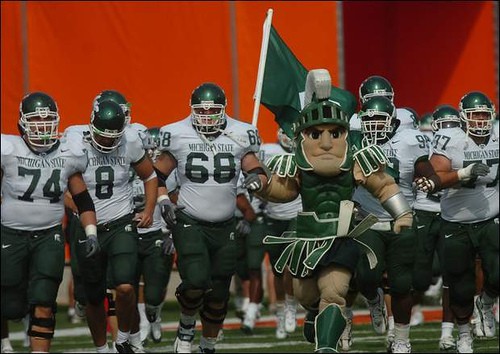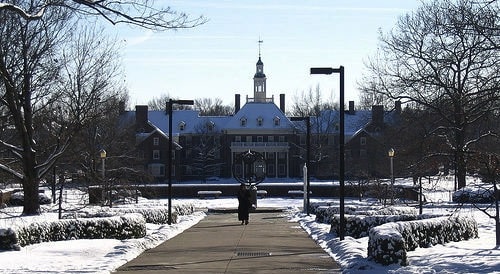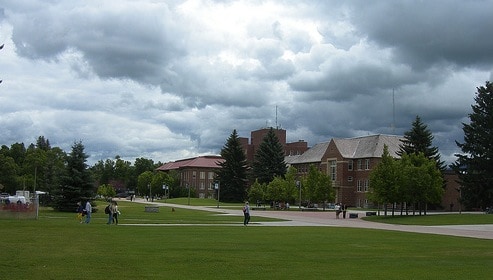This is part of a series: Learning from Large Cru Movements- a look at 8 of the largest Cru movements in the U.S.  Read the Series intro here.
Overview of the Movement at Michigan State
Movement stats as of 2011
- 47,000 students enrolled at Michigan State
- A classic Big Ten school
- Good academics, but not the number one thing in students’ lives
- Good leaders, good social skills
- Most students work 10-20 hours a week (because of Michigan economy)
- 15,000 in dorms (largest dorm system in the U.S.)
- 5,000 internationals (a lot of Chinese — 3,000)
- 16 Cru staff (4 bridges, 12 traditional). Interns — 4 last year, 10 this year (most recruit themselves)
- 550 involved
- Weekly Meeting — 400-500 throughout year; first meeting — 500
- Bible Studies — 550 involved
- 140-150 Freshmen in studies
- 80-100 Small Group leaders
- Brian Langford directs the movement at Michigan State
- 12 years at Michigan State
- 15 years on staff (was 30 when he came on staff)
Movement History and Biggest Contributors to Growth
- In 30 year history of the movement there’s just been 3 directors — great heritage
- In 2000, the movement had dropped to 150
- Staff team all transitioned out (by Brian’s third year)
- (Though movement didn’t decline because of that)
- Staff team all transitioned out (by Brian’s third year)
- Year three — jumped from 200’s to 300’s
- Went from 25 to 75 core leaders
- Mostly just the Lord — we were out there with 5 loaves, 2 fish asking God to work and He showed up
- The biggest thing was movement building (learned from Roger Hershey)
- I was trying to change things from up front but Hersh encouraged me that as long as I was doing the right things with the right people, things would change
- 2002 — I took 12 guys to disicple, the strongest leaders
- Every single guy leader in the movement (the next few years) came from those 12
- That changed our movement
- Instead of seniors coasting out, they finished strong
- There was a sense of radicalness to the group — praying to speak to professors
- One of those 12 told me, “I want a night for prayer and revival” — I gave him Paul Eschelman’s (head of Jesus Film) email and Paul came and spoke!
- Those 12 men prayed every week
- If your senior guys are praying, you’re in a good spot
- I still had my hands in with every single guy leader
- They were all in my study
- I empowered those 12 leaders — I presented the issues — “what do we do about it?” and they took it on
- We have a great staff team
- Tom Roby told me (when he saw the team transitioning), “If I were you I’d raise up interns who are about what you are about vs. hoping for good placement of new staff” [hoping for sharp staff to be sent to you from the outside]
- What happened is we were blessed with both
Key Points
- Key Principle: Start the way you want to finish
- If you want freshmen who are engaged with the Lord, sharing their faith as seniors
- DNA — on Mich State website— we want students to know who we are as Cru
- Found out that we would hear different things from difference segments of Cru (students on east side would say something different than students on west side)
- We want students to know who we are, and the things we do are not because we’re Cru, it’s because we’re children of the King — serving Him
- Say it at the meeting (we don’t just recite it)
- When I’m giving a talk at the weekly meeting, I emphasize one of the points of our DNA
- Thru Small Groups and Discipleship and at leadership overnight
- The more students know us (Directors) as real people, they will trust us
- So we have cookouts at our house — all the men action group leaders (25-30 students).
- Invite all the freshmen over for dinner at our house
What do staff do?
- Normal week= 50 hour week
- I ask them to do 25 hours in prayer, evangelism, discipleship on campus (doing the things we tell our supporters we do)
- Each staff have target areas — 2-3 dorms each
- Rarely do I hand them disciples — most of them raise up men/women
- Brand new staff — I want them to raise up a freshmen group (even if they’re capable of leading an Action Group). There’s something special about raising up your own men/women (we rob them if they don’t get to do that)
- Staff lead a team — they’re the director of the team, and students are their staff
- I don’t want staff to plan the weekly meeting, but I want them to lead the studens who are actively doing it
Ministry Structure
Leadership Development/Training
- Don’t bring leaders together too often — two times a semester
- Because so many students are working jobs
- Info flows thru action groups (upperclassmen studies – all led by staff)
Weekly Meeting
- First meeting 500 students, maintain about that many throughout the entire year
- Usually finish stronger than we started (at weekly meeting)
- Michigan State doesn’t have any central place to generate buzz (to put up posters, etc) so we don’t get a lot of buzz for our first meeting
- People come almost all thru relationships (but still hand out posters to students, cups, magnets — a more personal PR approach as opposed to random posters).
- I tell our students: We want to be bigger and stronger in May than we were in August
- You’ve gotta give students a place to connect on a smaller level (not just come to the weekly meeting)
- I’ve really been pushing sophomores to own a piece of the movement by being on a team (outreach, weekly meeting) in addition to being in a small groups
- That way there are 2 places they’re connecting on a small level
Bible Study Structure
- Have three levels:
- Life Groups
- Training Group
- Actions Groups (not open to public; made up of Bible study leaders and team leaders)
- We’re finding that guys need more time to mature so we’re adding the training group (before they’re ready to really lead)
- Guys have to be pursued and brought along
- We have to really go after them and develop them
- The old training group was knowledge based.
- We’re requiring if they’re in a training group, they have to be engaged on mission, you’re out there actively seeking to share Christ and we’re going to help you.
- Staff — lead 12-13 students in their Action Group
- We haven’t multiplied (increased the number of) leaders since ’03 — we’ve been in replacement mode
- Some of our issue is that we have too good of staff (who end up doing it)
- How do we engage students?
- How do we get all the students at our weekly meeting and get them engaged in mission?
- This year, I took on 12 new guys (some risky) — I gave them a really high challenge. This isn’t just about learning from me, and they never would have shared their faith except they’re in my group
- Personally challenged them to be in my study (got the names from other staff guys — who are the guys that have great potential but aren’t currently being discipled)
- Start the way you want to finish
- Eventually I want these guys to finish sharing their faith, so I’m going to start now
What are your biggest takeaways from learning about the Cru ministry at Michigan State?
photo courtesy of spartanjoe




